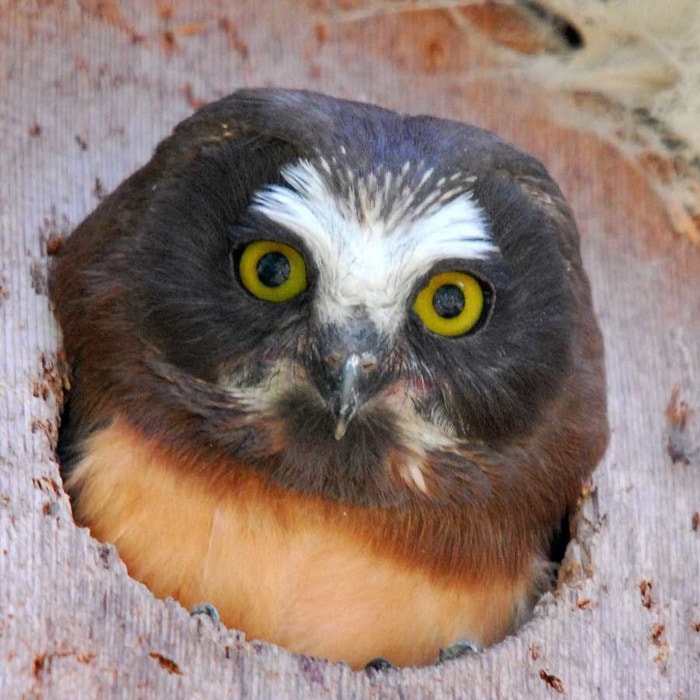Imagine building your house with only your mouth and your feet — no easy task but one that millions of birds do on an annual basis.
Nest building is an instinctive talent that birds posses and it is remarkable how creative they can be. Some bird species build a new nest each year others like the raptors will often reuse the same nest site for many years just carrying out yearly repairs.
Nests come in all shapes and sizes many of which are constructed in trees, other species prefer to choose unusual places and some don't construct a nest at all merely scraping out a hollow on the ground.
Shelter from the elements and safety from predators are required together with caring parents if the eggs and the young are to reach the fledgling stage.
One of the most common nest shapes is the "cup" which can be constructed in a variety of trees and shrubs and are usually anchored in the fork of two branches. These nests come in a variety of sizes and have unique adaptations depending on the bird.
Rhe diminutive hummingbirds will often build directly onto a branch; the nest is made of dried grasses which are wrapped in lichen and filled with soft feathers or cattail fluff, the outside is then wrapped again with spider's webs. This finishing touch allows the nest to expand with the rapid growth of the baby birds.
Not all birds use nests, the burrowing owl adopts an old gopher or prairie dog burrow, taking soft materials to a nest chamber at the end of the burrow; kingfishers also use burrows that they excavate with their two fused front toes, digging a tunnel and nest chamber into a river bank above the high-water mark.
One of the most crucial habitats for nesting birds and other wildlife species are the old growth forests which provide the trees for the cavity dwellers.
Forests that have old and decaying trees are critical for species such as small owls, songbirds like chickadees, nuthatches, wrens and sparrows and even a variety of ducks such as mergansers, wood ducks and the marbled murrelet.
Dead or decaying trees are often soft and hollow and allow pileated, hairy and downy woodpeckers together with northern flickers to excavate holes in the bark to access the insects that are their staple diet. The holes are enlarged to create cavities which may be used by the woodpeckers for one season or immediately abandoned.
These cavities provide the perfect nest sites for a variety of creatures particularly the small owls such as the saw whet, northern pygmy, western screech owls, and other creatures such as squirrels.
Over time trees become riddled with holes that cause the tree to rot and eventually die. This is a critical process as the decomposing tree feeds a multitude of insects that in turn are eaten by the birds.
Finally, the nutrients are recycled and returned to the forest floor, allowing natural regeneration of the forest to take place. Larger owls do not use cavities but they do use the snags that are left when the tree tops break off; great grey owls, and great horned owls in particular use these trees for nesting.
Short-eared owls are alone in their choice of nest sites; their habitat is grassland which makes them rely on their camouflage for protection. They scrape an indentation into the ground in a grassy area; the parents diligently sit on the nest blending in with the grasses during the day when they are more visible.
Many bird species have adapted to building their nests in urban areas using abandoned building, caves, chimneys or even the concrete under a freeway overpass.
Swallows construct nests made entirely from mud, which they gather in their mouth where it is mixed with saliva, then they spit the muddy globules on to the concrete where it hardens into a half cup nest, a true labour of love.
Some nest creations are amazing feats of engineering, examples of this are the "warblers and weavers" that create intricately woven nest, which often resemble pendants hanging from a branch complete with a concealed entrance underneath.
Our local blackbirds also create woven masterpieces from weaving reed nests in the cattails, and they defend their nests with great ferocity. The last group of birds include many species of sea birds that use precarious sites which eliminates ground predators.
Cormorants are one example of these birds that lay their eggs on bare rock ledges on remote islands. Due to the precarious choice of nesting site, their eggs are often pointed at one end so that they roll in a circle instead of falling off the ledge, nature seems to think of everything!
Like all things in the wild there are always some species that do not even attempt to build a nest rather they simply lay their eggs in another birds nest making them assume the duties of a foster parent!
There are some wonderful parks and trails where wildlife trees abound; one of my favorites is Miracle Beach Park, which has many different habitats from rain forest, to river, to estuary and finally the sea shore.
April celebrates National Wildlife Awareness and is a great time to visit the park with the family. Please remember to leave the forest as you find it and do not remove nests that are protected by law. MARS will hold an open house on April 7, visit our website for more information. To report abandoned baby or injured wildlife call 1-800-304-9968.
Sandy Fairfield is the educational co-ordinator for the Mountainaire Avian Rescue Society (MARS). The MARS column appears every second Friday.
